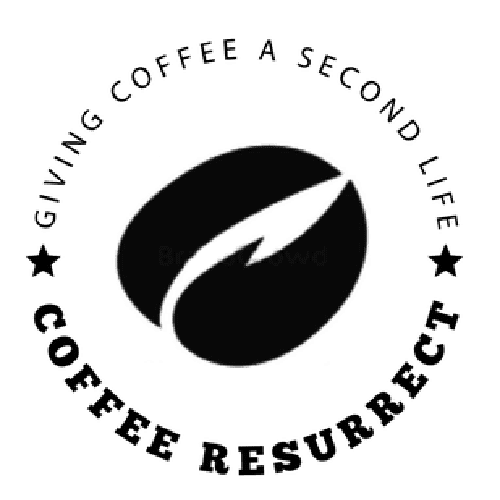According to legend, it was an Abyssinian shepherd who discovered the stimulating properties of coffee. Historically, the beverage, which only Muslims were initially allowed to consume, later served to link the country's different communities. Today, coffee is omnipresent in the daily lives of Ethiopians and is the focus of a highly codified ceremony on feast days. While drinking coffee is something widely celebrated, discussions about the massive amounts of waste coffee production leaves behind are not heard quite often. However, the huge amount of residue generated annually in the production and consumption of coffee requires innovation and a waste management plan. Countries’ coffee waste figures are actually comparable to the amount of coffee the country exports and imports. The processing of coffee generates significant amounts of agricultural waste, ranging from 30 to 50 percent of the weight of the total coffee produced. As is known, coffee beans contain several classes of health-related chemicals, including phenolic compounds, melanoidins, diterpenes, xanthines, and carotenoids. The wastewater coming out of the coffee industry has a high concentration of organic pollutants and is very harmful for surrounding water bodies, human health, and aquatic life if discharged directly into the surface waters. Hence, it is essential to treat and manage the coffee waste, and therefore, the coffee industry is responsible for the generation of large amounts of residue. Spent coffee grounds, coffee silver skin, coffee pulp, and coffee husk are the main coffee agricultural and industry residues. For example, over 9 billion kg of coffee are consumed annually worldwide, and 99% of that becomes spent coffee grounds, which are currently treated as waste. Most of it ends up in landfills, where it decomposes and releases methane, a greenhouse gas 86 times more harmful to the environment than CO2. The yearly environmental impact of coffee waste decomposition is equivalent to 10 million car emissions. We utilize sustainable industrial biotechnology to convert coffee waste in Africa into all-natural ingredients for personal care, food, and beverages. Our inaugural offerings include an award-winning, eco-friendly, active, and multifunctional coffee oil, flour, and fiber, all derived from recycled coffee grounds. At COFFEE RESURRECT, we prevent these materials from ending up in landfills through collecting this optimal raw material from our industry partners and small-scale coffee growers. We then convert them into flour, fiber, and oil using a proprietary, environmentally friendly process. This innovation recycles and then upcycle what was previously regarded as waste into nutrient-dense food ingredients, versatile personal care and cosmetic ingredients. In contrast, most products on the market are obtained from green or roasted beans, which end the coffee lifecycle and create significant waste each year. As a result, we've become a significant player in the circular economy, using coffee by-products to promote a more sustainable future for all. Our coffee oil and flour in food and beverages are suitable and key ingredients for gluten-free, high-protein recipes, high-fiber content used in any bakery, confectionery, pizza and pasta, sports nutrition, and healthy snack bars. Can Be Used as Flavors or Textures, Preservatives and Food Additives, Natural Food Coloring, Our coffee oil and fiber are ethically and sustainably sourced inputs for personal care and cosmetics manufacturers to make sun care, aging treatments, skin barrier enhancement, anti-cellulite, night and day creams, serums and face oils, lip balms, shampoos, conditioners, and scalp revitalizers, hand creams and lotions, scrubs, soaps, and cleaning gels and cleaners with natural exfoliating agents. It's anti-inflammatory properties, caffeine, and collagen-boosting effects make it a valuable ingredient in skin-firming products. Coffee flour and coffee oil are the new superfoods. It has more protein than kale, more iron than spinach, two times more protein per gram than brown rice flour, more fiber per gram than whole grain wheat flour, fewer calories per gram than buckwheat flour, less fat per gram than coconut flour, and more potassium per gram than a banana, and could help solve the global hunger crisis. At 23.61 million, the number of people facing high levels of acute food insecurity in Ethiopia reached an unprecedented level in 2022. This includes an estimated 10.73 million people who did not have the means to cover their minimum food needs. More than 70% of the Ethiopian population regularly consumes injera, a pancake-like flatbread with a slightly spongy texture traditionally made of teff flour, for their diet purposes. Coffee flour and oil can also have a positive impact as they are introduced into the local food supply. If we try to keep 30–50% of the product in its place of origin in order to provide the local community with a more affordable food source, commodities like corn and wheat are not generally grown in the same area as coffee, so these goods are expensive in our farmer communities. We’re hoping to make these products an affordable and more nutritious alternative, which can have a huge impact on these regions’ local food systems and their people's well-being. We protect the health and well-being of residents in nearby areas where these coffee wastes are sent to landfills and allow companies and countries to benefit from our virtues for longer—all through a way of being corporate socially responsible as well. Representing the story of Ethiopian coffee, we are committed to unveiling the health benefits of coffee while ensuring minimal harmful emissions and maximizing the usability of coffee by-products. By enhancing the economic lifespan of coffee, we aim to reciprocate the farmers to whom we owe its existence. Along this journey, we are determined to shift mindsets radically and demonstrate that materials can retain significant value, even after serving their initial purpose. First of all, impact! So, we save the planet and save on costs… pretty good, right?
